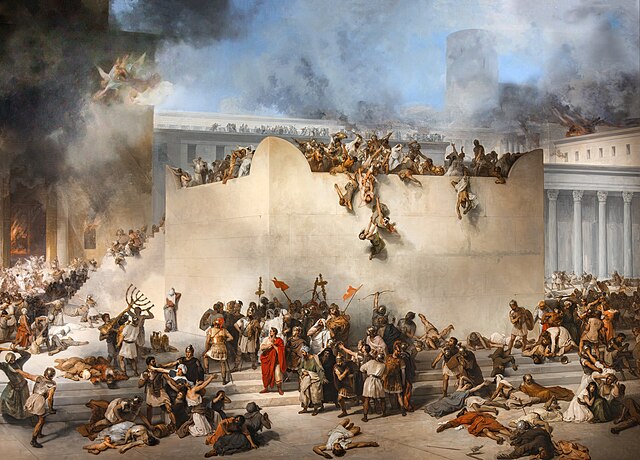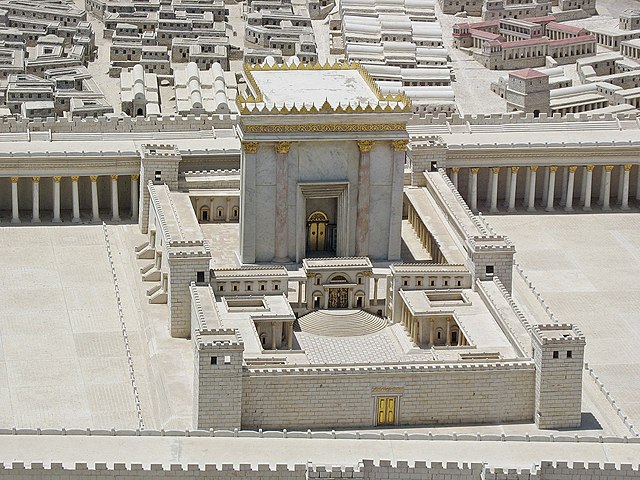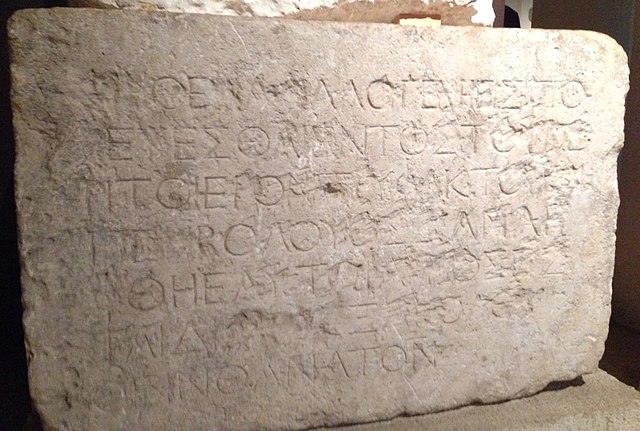The "Third Temple" refers to a hypothetical rebuilt Temple in Jerusalem. It would succeed Solomon's Temple and the Second Temple, the former having been destroyed during the Babylonian siege of Jerusalem in c. 587 BCE and the latter having been destroyed during the Roman siege of Jerusalem in 70 CE. The notion of and desire for the Third Temple is sacred in Judaism, particularly in Orthodox Judaism. It would be the most sacred place of worship for Jews. The Hebrew Bible holds that Jewish prophets called for its construction prior to, or in tandem with, the Messianic Age. The building of the Third Temple also plays a major role in some interpretations of Christian eschatology.
Subterranean fires defeat Julian's effort to rebuild the temple, illustration by James Dabney, 1877
Destruction of the Temple of Jerusalem, by Francesco Hayez
The Temple in Jerusalem, or alternatively the Holy Temple, refers to the two religious structures that served as the central places of worship for Israelites and Jews on the modern-day Temple Mount in the Old City of Jerusalem. According to the Hebrew Bible, the First Temple was built in the 10th century BCE, during the reign of Solomon over the United Kingdom of Israel. It stood until c. 587 BCE, when it was destroyed during the Babylonian siege of Jerusalem. Almost a century later, the First Temple was replaced by the Second Temple, which was built after the Neo-Babylonian Empire was conquered by the Achaemenid Persian Empire. While the Second Temple stood for a longer period of time than the First Temple, it was likewise destroyed during the Roman siege of Jerusalem in 70 CE.
Model of the First Temple, included in a Bible manual for teachers (1922)
Herod's Temple as imagined in the Holyland Model of Jerusalem. It is currently situated adjacent to the Shrine of the Book exhibit at the Israel Museum in Jerusalem
Jerusalem Temple Warning Inscription
Fragment of the Temple Warning Inscription at the Israel Museum.






